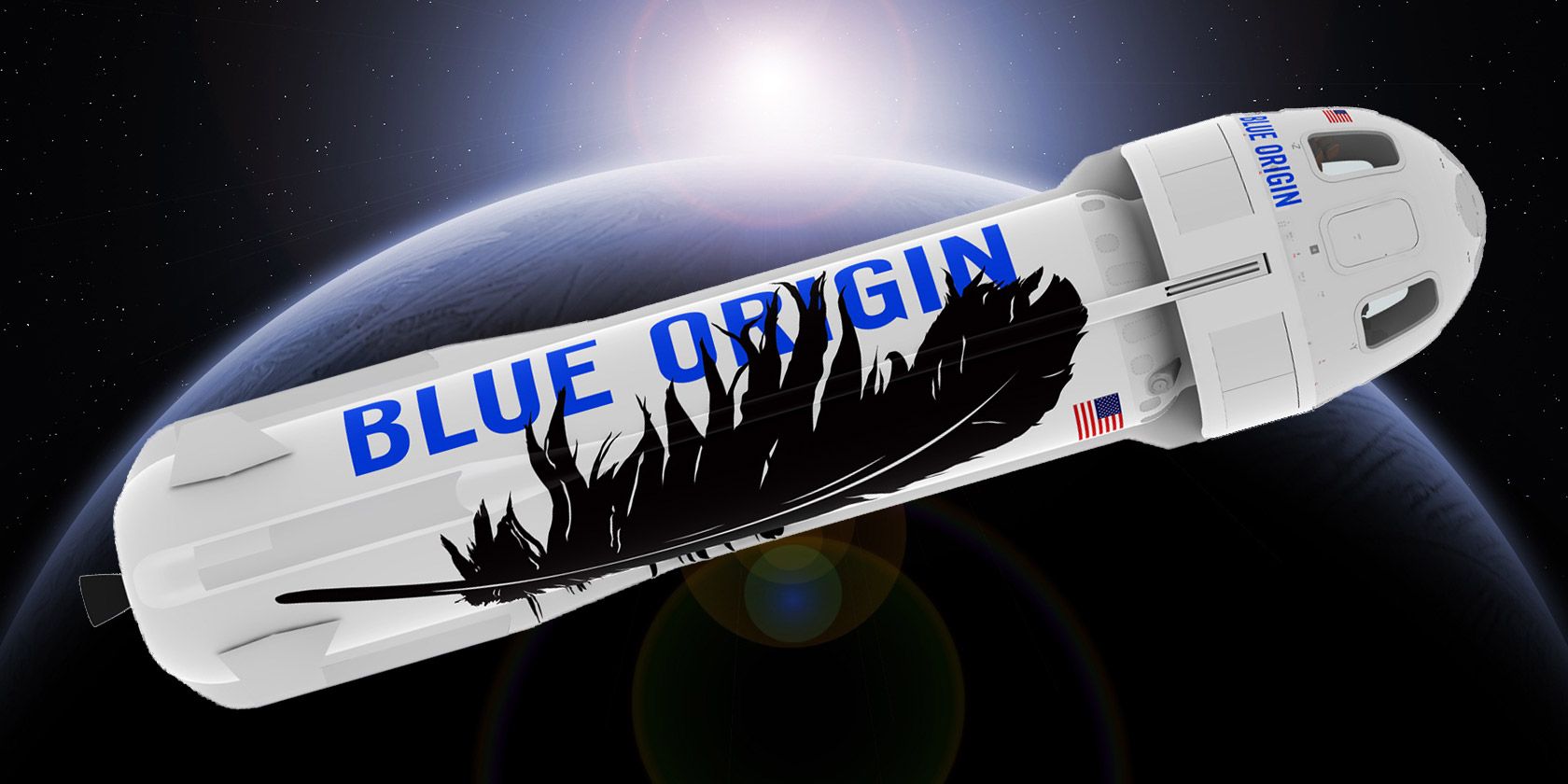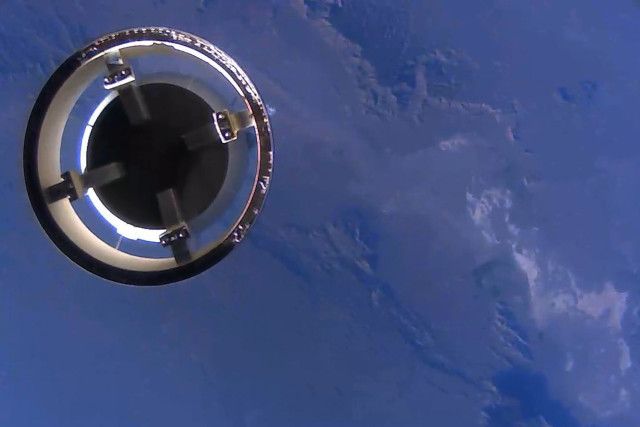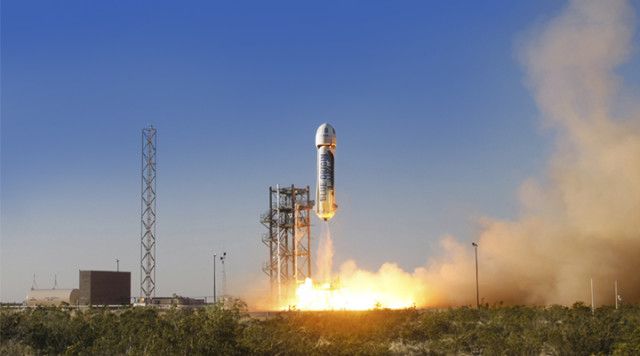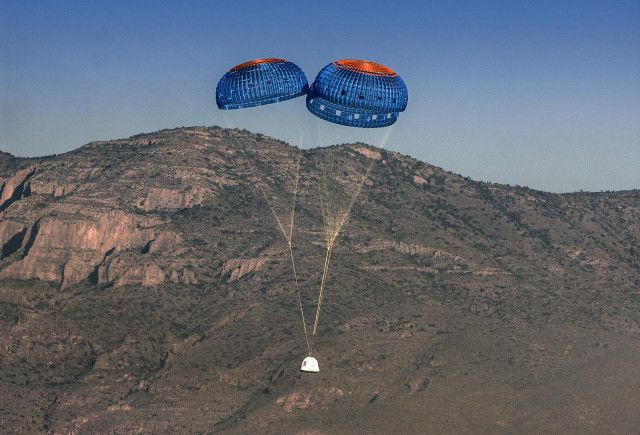What is it with tech billionaires and space?
Something about making a pile of cash in Silicon Valley seems to inspire a pressing urge to get off the planet. Elon Musk's SpaceX is changing the economics of orbital payloads, and Richard Branson's Virgin Galactic has opened up space tourism to anyone with $250,000 and a dream. Now, Amazon founder Jeff Bezos wants to get in on the action.
Bezos' company is called Blue Origin, and yesterday they semi-successfully ran the first test of their flagship craft, the "New Shepard".
What is a Suborbital Rocket?
The New Shepard, like Virgin Galactic's SpaceShipTwo, is a suborbital rocket. Rather than trying to reach all the way to Low Earth Orbit and stay there, suborbital spacecraft are designed to kiss the edge of space, 100 km up, and return. Tourists go up, spend a few minutes free-falling from space and land a few miles from where they started. The test yesterday didn't technically reach the edge of space, probably to save that moment for PR purposes. It did, however, successfully send its payload up 94 km and then recover it. You can see video of the launch below.
SpaceShipTwo and New Shepard both essentially the same thing, but they accomplish it in very different ways. SpaceShipTwo is a two-stage spaceplane. The craft is dropped from an airplane at high altitude, and uses onboard rockets to cover the rest of the distance. Its wings allow it to land independently on re-entry, making it fully reusable. However, as we learned from the shuttle, space planes are inherently expensive, and this eats up a lot of the advantages of reusability.
The New Shepard, in contrast, is a much more conventional looking rocket: it launches from the ground, and consists of a capsule perched atop a single booster. As far as rockets go, this is is pretty much coloring inside the lines. That said, it is cheap, time-tested, and reliable. This is crucial, in the wake of the tragic SpaceShipTwo crash a few months ago.
Besides, Blue Origin has one more trick up their sleeve...
Chasing Reusability
One of the reasons that rockets are so expensive is that you have to throw away almost all of the rocket to go anywhere. Normally, the booster rocket used to reach space either falls back into the ocean in a fiery blaze, or is abandoned in space. Only the capsule -- the tiny payload of the rocket -- is actually recovered.
SpaceX has been developing technology to recover their booster rocket for months now, and has been getting tantalizingly close. Now, Blue Origin wants to pull off the same trick for their suborbital missions, which could drastically cut the cost of suborbital space tourism. This innovation would also open the door to more ambitious space missions in the future -- including trips to orbit.
How does this work? The New Shepard's booster is throttleable, and contains guiding jets, fins, and landing legs, which allow the booster to save enough fuel to control its descent. In theory, the rocket can touch down gently on the ground and be serviced and reused all over again.
Unfortunately, at least on this test, the technology did not pan out. While the capsule was recovered safely, the booster rocket experienced a loss of hydraulic pressure, and crash-landed. Unlike SpaceX, Blue Origin did not put out an awesome video of their rocket slamming into the ground and exploding. However, I think that's probably an understandable PR move.
Bezos wrote, in the press release, that the company knows the cause of the failure and is not discouraged, though he stopped short of giving a date for the next test.
"[O]ne of our goals is reusability, and unfortunately we didn’t get to recover the propulsion module because we lost pressure in our hydraulic system on descent. Fortunately, we’ve already been in work for some time on an improved hydraulic system. Also, assembly of propulsion module serial numbers 2 and 3 is already underway – we’ll be ready to fly again soon."
The Future of Space is Really Cheap
If either SpaceX or Blue Origin can pull this trick off, the results will be astounding. For context, SpaceX's Dragon V1 can lift 13,228 pounds of cargo, at a net cost about $13 million, or a little under $1000 per pound. This is already eight times cheaper than the Space Shuttle was. By allowing the rocket to be reused, this lets SpaceX potentially cut costs down to just fuel and maintenance -- and fuel is pretty cheap.
Elon Musk estimates that the fuel used by a Falcon 9 costs only about $200,000. Flights overall could cost less than a million dollars -- under $100 per pound. Getting down to this figure requires efficient maintenance and an extremely high launch rate. For now, SpaceX is targeting $500 per pound as their game-changing number.
The same economics apply to suborbital space. If the cost of a suborbital ticket can be slashed by two or four or ten times, it suddenly becomes available to far more people. Space tourism for the price of a nice house is cool, but it's a luxury service for the rich. Space tourism for the cost of a nice car is a consumer industry, and one with room to grow.
The Race is On
While SpaceX and Blue Origin compete in different markets, Blue Origin has ambitions that are just as lofty. If they can nail a reuseable suborbital rocket, the path is clear to extend that capability to orbital missions. The question, from the perspective of PR and inertia, is who can successfully get the tech working first. We are literally seeing the beginning of a new space race, between private companies instead of nations, driven by dollars instead of the threat of nuclear hellfire.
It's a very exciting time to be interested in space, and I can't wait to see what comes out of it.
Are you excited about reusable space technology? How far does the price have to fall before you'll buy a ticket? Let us know in the comments!




